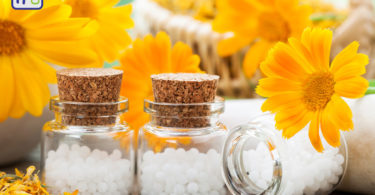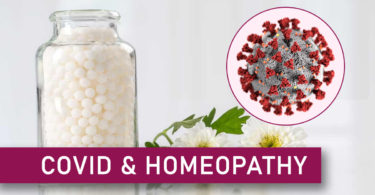Author :
Dr Varsha Vijay Agrawal
M.D(HOM),P.G.Diploma Psychological Counselling.
Associate Professor, HOD Surgery Dept.
T.S.H.M.C Amravati(M.S)
Abstract- This article addresses the causes and indications of homoeopathic medicines in treatment of Epistaxis.
Keywords- Epistaxis, Nosebleed ,Arnica, Little’s area, Bryonia.
Introduction –
Epistaxis is also called as a nose bleed. It is common and is not a disease but it is a symptom as well as a sign. Blood vessels in the nasal cavity are thin and fragile and so little trauma or pricking of the nose leads to epistaxis. Most of the epistaxis originates from little’s area.
Epistaxis can be classified as :
1. Anterior Epistaxis
2. Posterior Epistaxis
Common sites of Epistaxis
1. Little’s area (80-90%).
2. Above middle turbinates.
3. Middle meatus and posterior part of the lateral wall.
Causes
1. Idiopathic – where we don’t know the definite cause of bleeding from the nose.
2.Local causes-
i)Osler Weber Rendu Disease- It is a rare genetic blood vessel disorder that leads to excessive bleeding.
ii) Traumatic-Picking of the nose in little’s area, as this area is rich in blood supply so little picking results in nose bleeding.
-Dry hot climate -the inspired air tends to cause undue drying and crusting.
-# nose
– Foreign bodies that children insert in the nose while playing.
– Infective causes like nasal diphtheria, Rhinosporidiosis, acute and chronic rhinosinusitis, atrophic rhinitis.
-Rhinitis sicca is a condition in which the vestibule of nose dries up with the formation of dry scabs and if the patient picks the nose, it causes epistaxis.
-Neoplasms like carcinoma of the nose, Angioma.
3. Systematic causes
i) Hypertension
ii) Mitral stenosis
iii)Leading disorders like Leukaemia, Hemophilia, Agranulocytosis.
iv)Deficiency disease like Malnutrition, Vitamin deficiency, vit c, vit k.
v) High altitude or Caisson’s disease.
vi) Vicarious menstruation is a rare cause of epistaxis in which epistaxis occurs at the time of menstruation.
4. Some Drugs like anticoagulants can cause a nose bleed.
Investigations
1. Complete Haematological Examination- HB%, blood
count, platelet count, BT, CT, PT, etc
2. Radiological Examination -X-ray PNS
-CT scan
3. Blood Sugar, Urea.
4. Endoscopy of the nose.
5. Biopsy -if there is a lesion.
Miasmatic Diagnosis
Tubercular miasm has haemorrhages and so epistaxis comes under tubercular miasm Epistaxis which is bright red which occurs after any injury or over-exercise or fever or blowing of nose or washing face. Tubercular miasm covers nose bleeds which are difficult to stop and tend to recur periodically. Epistaxis relieves most of the complaints in tubercular miasm.
Management of Epistaxis
Homoeopathic remedies act beautifully in both acute as well as chronic nose bleeding as these medicines have a marked action on blood vessels of the nose.
Homoeopathic medicines are prescribed based on symptomsimilarity. after detailed history taking, we individualize the patient by studying signs and symptoms, physical and mental generals.
Homoeopathic medicines act on a dynamic plane and stop bleeding and also control inflammation and help to restore the altered mechanism. Homoeopathic medicines not only help to control nose bleeding caused by different pathologies but in cases where the causative factor for epistaxis is some stressful event or some fear, anxiety which has caused or triggered epistaxis homoeopathic medicines gives wonderful results.
Along with homoeopathic medicines, the patient can be advised
1. Ice or cold pack application that may arrest the bleeding by vasoconstriction.
2. Pinching of nose for a minute may help to stop bleeding.
3. In the case of Hypertension -Trotter’s procedure. The patient is asked to sit up inclined forward with mouth open and breathe quietly and asked to spit blood out .Pt. is asked not to clear nose by forceful blowing as it may dislodge a clot.
Homoeopathic Medicines for epistaxis are
1.Arnica Montana
It is indicated in traumatic epistaxis.
It is a haemorrhagic remedy with a marked effect on blood vessels.
Nose bleeding in patients after a fall, blow, or any injury and after every fit of coughing. There is a sore lame bruised feeling in patients with sudden epistaxis. nose bleed in which blood is dark and fluid and nose has a sore feeling. Arnica’s patient fears touch or approach of anyone. The patient is very sensitive to pain and he cannot bear the pain. Arnica patient suffers from Agoraphobia.
2.Phosphorus
phosphorus is indicated in epistaxis in anemic persons with a pale waxy look. Bleeding from nose instead of menses. Blood is bright red and profuse that does not coagulate easily. nasal polyp which is easy bleeding. Phosphorus patients suffer from chronic catarrh with haemorrhages and always complain that his handkerchief is stained with blood. Nose bleed during passing stool.along with epistaxis there is a fan-like motion of nostrils. Patients always complain of foul odours that are imaginary and these strong odours cause fainting and headache. The patient has thirst for icy cold drinks and water. Complaints of phosphorus patients are worst when lying on the left side.
3.Ammonium Carb
Ammonium carb is suited to stout women who are tired and weary and who are disposed to use of smelling-bottle. Epistaxis in patients coming on from activities like washing face and after eating. Nasal discharges are bloody Ozaena with bloody mucous from the nose. Children with a sudden stoppage of breathing from the nose with snuffles.
4.Ambrosia
Ambrosia is indicated in bleeding from the nose due to cold, rhinitis, and whooping cough. Watery coryza with sneezing also there is stuffed up feeling in the head and nose. Ambrosia is indicated in cases of bronchitis with a nose bleed. According to William Boericke 10 drops in water during and after the attack of epistaxis.
5.Ferrum Phos
this medicine is suited to pale anemic subjects with violent local congestion of the nose. bleeding from the nose is bright red along with headache and cold. Specially indicated in epistaxis due to sunstroke, anemia, high blood pressure.
6.Ipecac
Ipecac suits well in cases of nosebleed especially when the characteristic symptoms of ipecac that are persistent nausea and vomiting are present. Epistaxis with bright red blood which is profuse. Ipecac is specially indicated in fat children and adults who tend to catch a cold when the weather is warm and moist. Epistaxis with a clean tongue.
7.Arum Triphyllium
It is indicated in patients with acrid excoriating discharges from nose producing raw sores. Nose bleed in children,there is the formation of large scabs high up on the right side of the nose with constant pricking and boring of the nose until it bleeds. there is dryness of lips, the child picks lip until they bleed.
8.Melilotus
Epistaxis with bright red blood and this relieves sick headache in Melilotus.Congestion and hemorrhages seem to be a special manifestation of this drug. Hard clinkers in the nose. Nose stopped up, dry must breathe through the mouth. Individuals requiring mellilotus suffers from violent throbbing congestive headache.
9.Bryonia
Bryonia is indicated in epistaxis when there is vicarious menstruation. when there is frequent bleeding from nose when menses should appear. epistaxis in the morning which relieves the headache. Epistaxis with swelling of the tip of the nose feels as if it would ulcerate when touched. epistaxis worse by slightest motion and relieved by rest. The patient is very thirsty with dryness of mouth and throat.
10.Hamamelis
Indicated in epistaxis which is profuse, flow passive,non-coagulable with tightness in the bridge of the nose. Patient complaints of bad odours from the nose. It’s of great value in passive hemorrhages from any part of the body.
At a Glance
- Epistaxis with bright red blood -Phos, Ipecac, Mellilotus
- Epistaxis with dark blood – Lachesis, Ammonium Carb, Hamamelis
- Epistaxis with clotted blood -China, Crocus Sativa
- Epistaxis with Anaemia – Ferrum Phos, China
- Epistaxis caused due to Trauma – Arnica, Hamamelis
- Epistaxis from dry nasal crust -Arum Triph, Amm. carb,Kali Bich
- Epistaxis at Menopause – Lachesis
References
1. A short Textbook of ENT disease – K.B.Bhargava(5th edition)
2. Miasmatic Prescribing – Dr. Subrata Kumar Banerjea(2nd extended Edition)
3. Pocket Manual of Homoeopathic Materia Medica &Repertory(2nd edition)
4. Comparative Materia Medica by F. A. Farrington(reprint edition 2003)





